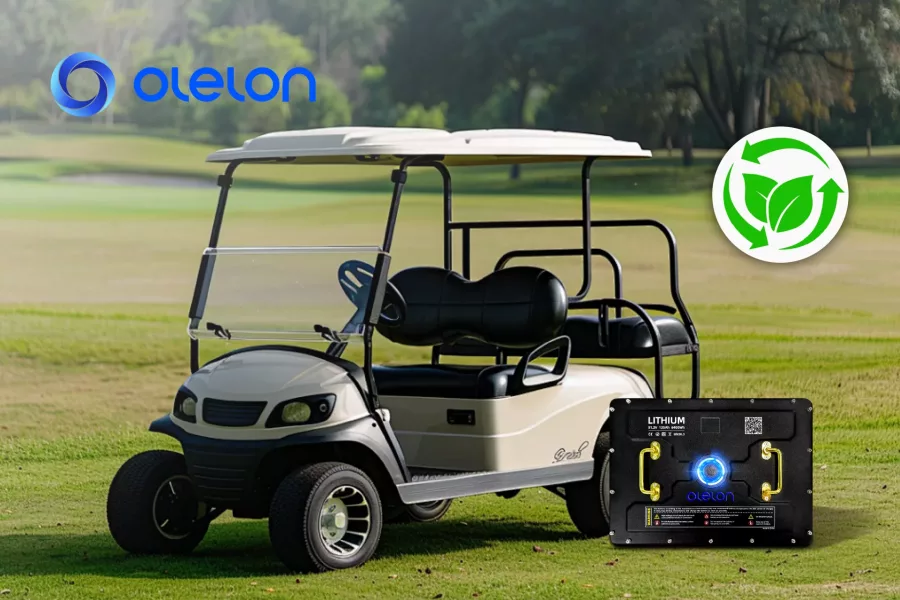Introduction
Golf carts have evolved significantly over the years, shifting from gasoline engines to battery-powered systems. Among these advancements, lithium-ion golf carts have emerged as a game-changer, revolutionizing performance, efficiency, and longevity. Learn more about the shift in electric golf cart trends.
1. Understanding Lithium-Ion Golf Carts
The Shift from Lead-Acid to Lithium-Ion
Traditional golf carts primarily relied on lead-acid batteries, which, despite being affordable, have significant downsides. Lithium-ion golf carts offer superior energy density, lighter weight, and enhanced longevity. Read a detailed comparison in Lithium vs. Lead-Acid: Golf Cart Battery Upgrade Guide.
Market Growth and Industry Trends
As technology advances, lithium-ion adoption in golf carts is increasing. Innovations focus on smart battery management and integration with renewable energy sources, improving efficiency and sustainability.
2. Why Choose Lithium-Ion Golf Carts?

Key Advantages
Lightweight Design
Lithium-ion golf carts are significantly lighter, improving speed, handling, and reducing wear on components.
Extended Range and Efficiency
A single charge can last for 18 to 36 holes. Learn about golf cart range optimization.
Faster Charging Times
Lithium-ion golf carts charge 50% faster than lead-acid. Find out how to choose the right charger.
Low Maintenance and Longevity
Lithium-ion golf carts require no watering or extensive cleaning and last 3 to 5 times longer than lead-acid counterparts.
Enhanced Safety Features
Smart Battery Management Systems (BMS) prevent overcharging and overheating. Read more about BMS technology.
3. Technical Insights into Lithium-Ion Golf Cart Performance
Battery Capacity and Voltage Considerations
Golf cart batteries come in various voltage configurations, such as 48V and 51.2V. Learn how to calculate battery requirements.
Smart Battery Management Systems (BMS)
A BMS optimizes charging and discharging while preventing overvoltage or undervoltage.
Cold Weather Charging Solutions
Modern lithium-ion golf carts support cold-weather charging. Discover ChillCharge: Low-Temperature Lithium Solutions.
4. Upgrading to a Lithium-Ion Golf Cart
Retrofitting vs. Buying a New Lithium-Powered Golf Cart
Learn how to upgrade an old golf cart to lithium.
Essential Components for a Lithium-Ion Upgrade
Necessary components include a charger, battery brackets, wiring harnesses, and a BMS.
Installation and Real-World Applications
Case studies show that lithium-ion transitions improve efficiency and reduce costs.
5. The Future of Lithium-Ion Golf Carts
Smart Monitoring and Connectivity
Smart apps allow users to monitor battery status remotely. Read about smart battery monitoring.
Wireless and Solar-Assisted Charging
New trends include wireless charging and solar integration for sustainable power.
Automated Fleet Management for Golf Courses
Golf courses use fleet management systems for efficient scheduling and tracking.
6. User Experience and Customer Insights
Real-World Benefits for Golf Course Operators
Operators report faster charging, reduced maintenance, and improved customer satisfaction.
Testimonials from Golfers and Enthusiasts
Golfers appreciate the lightweight design, consistent power, and reduced environmental impact.
7. Choosing the Right Lithium-Ion Golf Cart and Maintenance Tips
Selecting a High-Quality Lithium-Ion Golf Cart
Consider brand reputation, warranty, and specifications when choosing a lithium-ion golf cart. Learn more in the Lithium Golf Cart Buying Guide.
Best Practices for Golf Cart Maintenance
Proper charging habits and storage conditions can extend lifespan.
Common Issues and Troubleshooting
Issues like reduced range or charging irregularities can often be resolved with proper diagnostics.
Conclusion
Lithium-ion golf carts have redefined the industry with superior performance and sustainability. Whether upgrading an existing cart or investing in a new model, understanding lithium-ion technology ensures better efficiency and longevity. Explore real-world customer success stories.

